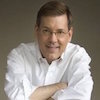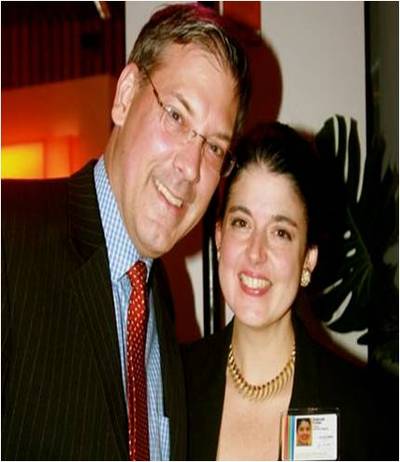Forty years ago, El Museo del Barrio was a dream contained ina single classroom so far north that “sophisticated” Manhattanites would notvisit there after dark.
It was founded in 1969by artist and educator Raphael Montañez Ortiz and a coalition of parents,educators, artists, and activists who noted that mainstream museums largelyignored Latino artists.
Last week, on a cold,windy night, over 1,600 New Yorkers arrived to welcome the opening of theMuseum after more than a year of renovations. The place was so alive, so hot – so on fire.
It was theinvitation-only inaugural preview and members’ reception of two shows, Voces y Visiones,and NexusNew York: Latin/American Artists in the Modern Metropolis.
I focus in this piece on Nexus New York, and in the DailyKos on the second show Voces yVisiones.
In celebration of ElMuseo’s reopening, the Empire State Building was illuminated with the museum’ssignature mango-yellow color.
“El Museo del Barrio isat the junction of Museum Mile on Fifth Avenue and the gateway to El Barrio, aneighborhood rich in Latino traditions,” says Julián Zugazagoitia, El Museo’sDirector and CEO.
“Our holdings andprograms span from our Puerto Rican roots to a wide range of Latino, Caribbeanand Latin American cultures,” Julián said.
I was delighted to meetand chat with the curator of Nexus NewYork, Deborah Cullen, who gave me a detailed understanding of her newexhibition.
I was delighted to meet and chat with the exhibition’s curator, Deborah
Cullen.
“Nexus New York covers new ground for most viewers,” Deborah told me. “The connections brought to life in ourgalleries have never been concretely explored before – by bringing the actualartworks from the times together, we are allowing them to speak for themselvesand the vibrant dialogues occurring from early in the 20th century.”
“The longstandingintertwinement of Latin American artists in what has been thought of as“American” modernism, their presence and impact, is very enduring, rich, andmulti-faceted,” she explained.
This landmark exhibitionexamines pioneering Caribbean and Latin American artists who lived in New YorkCity before World War II and shaped the American avant-garde.
El Museo has unveiled a new visual
identity that reflects the vitality of its offerings and
programs. The new visual identity is the work of Miguel Sal, executed by Elvira
Moran
Between 1900 and 1942,New York City was the site of extraordinary creative exchange where artistscould share ideas in a global context.
Nexus: New York is the first exhibition to explore the profound waythese artistic exchanges between Latino and non-Latino artists deeply impactedart and art movements in this city and numerous countries for years to come.
Chief among them were FridaKahlo, Diego Rivera, and Miguel Covarrubias – familiar to me from trips to themuseums of Mexico City. Works from eachof the artists’ are on show in el Museo’s NexusNew York.
Salvador Dali, RobertMotherwell, Wilfredo Lam, and Marcel Duchamp are also represented in the show.
The exhibition is alsodeeply representative of El Museo’s mission to produce new scholarship on thesignificant yet sometimes overlooked contributions made by Latino, Caribbean,and Latin American artists.
More than 200 importantworks by artists from Bolivia, Brazil, Chile, Cuba, the Dominican Republic,Ecuador, Mexico, Peru, Puerto Rico, Uruguay, as well as by artists working inthe United States, are presented together for the first time.
Chatting with El Museo del Barrio staff Michelle
de Leon and Mariana Salem.
The swiftly-changingurban landscape before and between the World Wars inspired the erosion ofartistic boundaries and fostered a new climate of modernist experimentation.
Frida Kahlo’s hauntingwork memorializing socialite Dorothy Hale’s 1938 suicide in New York isincluded in the exhibition.
Frida Kahlo. The Suicide of
Dorothy Hale (El suicidio de Dorothy Hale). 1939.
Nexus New York focuses on key artists from the Caribbean and LatinAmerica who entered into dynamic cultural and social dialogues with theAmerican-based avant-garde and participated in the development of a new moderndiscourse.
The exhibit features forthe first time ever, a fresco panel from Diego Rivera’s New Workers’ SchoolCycle, completed in late 1933 after his ill-fated Rockefeller Center mural, oneof the most significant art world controversies ever to take place on U.S.soil.
This scandal involvedRivera’s 1933 mural Man at the Crossroads, which was destroyed in 1934 beforecompletion due to Rivera’s sympathetic depiction of Lenin.
Frustrated Rivera utilizedhis large Rockefeller family fee to carry out the Union Square mural cycle thatclearly depicted his political ideologies, once the other project was abruptlydestroyed.
Before this controversy,Rivera, who spent 1930 to 1934 in the United States, was honored with a soloexhibition at the Museum of Modern Art in 1931.
Diego Rivera. Opponent of Fascism (Adversario del
fascismo). 1933.
Photo courtesy Collection Michael Fuchs, New
York. Photo: Jason Mandella.
© 2009 Banco de Mexico Diego Rivera Frida Kahlo Museums Trust,
Mexico, D.F. / Artists Rights Society (ARS), New York.
An illustrated,bilingual scholarly catalogue, distributed by Yale University Press, willaccompany the exhibition, with essays that focus on specific environments,exchanges, or centers, and which detail the various artists’ New York milieusand artistic development.
The renovated museumfeatures a new glass façade, a redesigned courtyard, modernized galleries, aswell as a new café/programming space and an expanded shop.
The design by GruzenSamton Architects received an award for Excellence in Design presented by MayorMichael Bloomberg on behalf of the Art Commission of the City of New York.
Major support for theexhibition was provided by the Terra Foundation for American Art, Agnes Gund,and the Henry Luce Foundation. The leadcorporate sponsor is MetLife.
Miguel Covarrubias. Comedian (Humorista). 1927.
Photo courtesy of El Museo del Barrio, New
York City.
Photo: Jason Mandella. © María Elena Rico Covarrubias.
A dynamic artistic,cultural, and community gathering place, El Museo is a center of cultural prideon New York’s Museum Mile.
Since its inception, ElMuseo has been committed to celebrating and promoting Latino culture, thus becominga cornerstone of El Barrio, and a valuable resource for New York City.
El Museo’s variedpermanent collection of over 6,500 objects spanning more than 800 years ofLatin American, Caribbean, and Latino art includes pre-Columbian Taínoartifacts, traditional arts, twentieth-century drawings, paintings, sculpturesand installations, as well as prints, photography, documentary films and video.
El Museo del Barrio islocated at 1230 Fifth Avenue at 104th Street, across from Central Park and oneblock above the Museum of the City of New York. It is situated between the Upper East Side and East Harlem – “El Barrio.”
Photos of reception attendees by John Lee.

